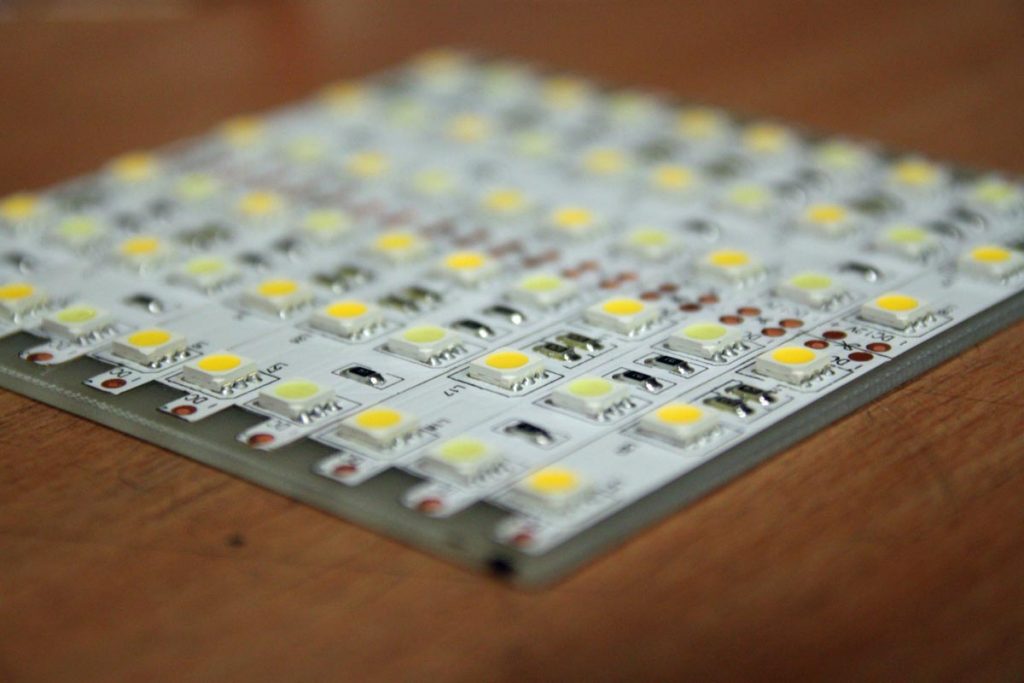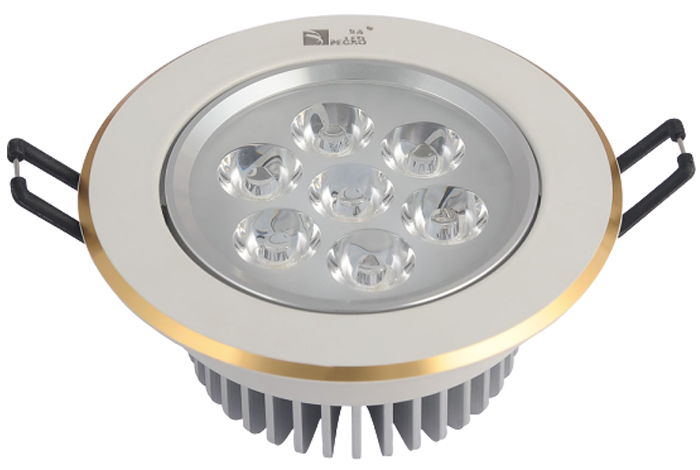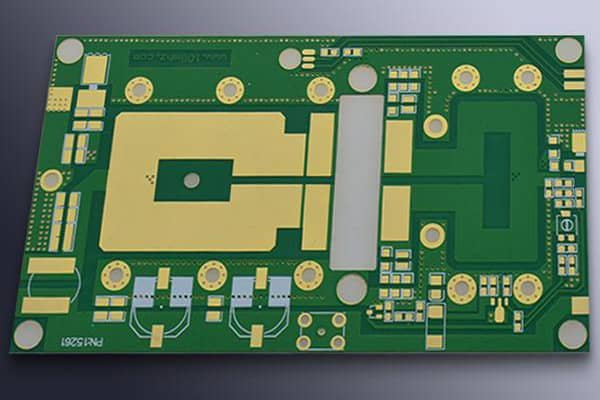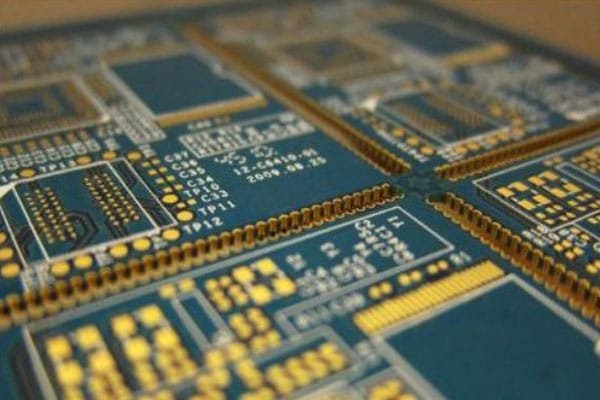Custom Aluminum Core LED PCB Board, LED Circuit Board Fabrication Services
SMD LED PCB Board | Round LED PCB Board | Aluminum LED PCB | Aluminium PCB Board for LED | LED Tube Light PCB Board | LED PCB Manufacturer
Home » PCB Manufacturing » LED PCB Board
Nowadays, LED lighting is more preferred than fluorescent and incandescent lights. It is almost used in every industry, even at our homes. Due to its popularity, the PCB is commonly known as LED PCB or PCB Board for LED. It is known by many names, including LED circuit board, LED aluminum PCB, LED PCB board, etc. But all of them refer to one thing. Due to the rise in LED lighting, LED PCBs are widely fabricated and used almost everywhere.
What is LED PCB?
What is an LED PCB Circuit Board?
Printed circuit boards are a technology that plays a valuable role in supporting LEDs. LED PCB is usually made of aluminum or metal core as the substrate.
LED stands for Light Emitting Diode. It’s a semiconductor that emits light when current flows through it. It provides light, which is the reason it is famous and widely used.
Now, LEDs have replaced the old and traditional lighting methods that consume more electricity and are expensive. LED is a better way because it’s more reliable, long-lasting, and efficient. But when we need more lightning to illuminate a particular area, a combination of LEDs is used. In simple words, an LED is not enough to illuminate a large extent, so multiple LEDs are used according to the requirement. Most of the time, SMD LEDs are used because they are compact and can provide excellent brightness or lumens. There is a special SMD LED PCB board, which is widely used. These LEDs are placed on a PCB; hence, the board is named LED PCB.
LEDs have a long life so that they can last for a long time. For instance, an SMD LED can last up to 100,000 hours on average, and even more. Therefore, they are preferred over other methods.
Why LED PCB?
FR-4 is less expensive than metal-core PCBs, but still, it is not preferred. The reason is that LEDs give off too much heat, so it’s necessary to have an excellent heat dissipation capability. FR-4 does not have that capability. Moreover, even if you want to use high heat-dissipating components in FR-4, you need to use heat sinks that take more space on the board. In contrast, aluminum can dissipate heat efficiently, and there is no need to use heat sinks because the base material is more than enough. The dielectric layer transfers the heat to the aluminum layer, and the PCB can efficiently dissipate a high volume of heat without any hassle. This is the reason components can work for a more extended period. Moreover, aluminum can withstand high temperatures; it does not bend or deteriorate. An LED PCB is more durable and long-lasting; therefore, it is preferred.
6 Types of LED PCB Boards
An LED PCB board is a printed circuit board designed to mount LEDs. The substrate material of the board mainly determines LED PCB thermal conductivity. According to different performances in thermal dissipation, there are 6 types of LED PCB boards.
- Aluminum LED PCB: Aluminum LED PCBs are the most common and cost-effective printed circuit boards for LED lights, such as LED plant grow lights. The aluminum LED PCB design is relatively simple. There are single-layer aluminum LED PCBs, double-layer single mounting-sided aluminum LED PCBs, double-layer dual mounting-sided aluminum LED PCBs, and 4-layer dual mounting-sided aluminum LED PCBs.
- Copper-base LED PCB: Copper-based LED PCBs are used for high-power LED lights, such as car headlights. Regular copper-base LED PCBs have the same structure as aluminum LED PCBs, but thermal conductivity is several times higher than aluminum LED PCBs.
- FR-4 LED PCB: If the LED light is used as daily home light and doesn’t require much printed circuit board thermal dissipation, an FR-4 LED PCB can be a cost-effective printed circuit board option. The prices of FR-4 LED PCBs are lower than other types of boards.
- Ceramic LED PCB: High-power LED lights, especially photography and swimming pool lights, use ceramic LED PCBs. Ceramic LED PCBs include aluminum nitride (AlN) PCBs, aluminum oxide (alumina) PCBs, boron oxide (BeO) PCBs, and silicon nitride (Si₃N₄) PCBs. And the most common ceramic LED PCB boards are AlN PCBs and alumina PCBs.
- Hybrid substrate LED PCB: The substrate material can be hybrid for high-power LED PCB boards. Hybrid LED PCB boards can have two or three kinds of substrate materials. And different substrate materials are connected by phase change, which means they combine into a whole.
- Flexible LED PCB: Flexible PCBs with polyimide or polyester substrate is used for flexible LED strips. Flexible LED PCBs can be used for face mask lights, miners’ headlamps, and indoor/outdoor decoration light strips.
Flexible LED lights are much lighter than rigid LED lights, which can blend and fold to be any shape you want.
The Benefits of LED Circuit Boards
Advantages of Aluminum LED PCB
Aluminum is commonly used for an LED circuit board because of its advantages.
- Less Cost
The cost of Aluminum LED PCB is much lower than other metal-core PCBs. It’s a cost-effective solution for high-volume heat dissipation. Furthermore, there is no need to use heat sinks.
- Excellent Heat Dissipation
Aluminum LED PCB is used because of excellent heat dissipation. LEDs give off more heat as compared to other electronic components; therefore, they need excellent heat dissipation. It increases the life of the components and saves them from any damage.
- Lower power consumption
The efficiency of high-quality LED lamps is six to seven times that of traditional incandescent lamps. On average, switching your house from incandescent to LED light can reduce your energy consumption by more than 80%.
- Durable
Metal-core PCBs are durable. They do not bend due to high temperatures, and they can bear wear and tear. They are rugged, which is the reason they are used in automobiles and streetlights.
- Longer service life
The service life of LED bulbs can exceed 25,000 hours or three years of 24/7 use. This is 25 times that of any traditional light bulb. This saves you the time, money, and energy of buying and installing new bulbs!
- Very compact
Due to their small size, LED lights can be used in applications of various sizes and varieties. This means that manufacturers can plug LEDs into anything from computers and smartphones to cars and traffic lights.
- Lightweight
Aluminum is lighter as compared to other metals. Due to its lightweight, the weight of the final product is less.
- No mercury, more environmentally friendly
Unlike traditional options, LED lamps do not contain mercury. Compared with conventional light bulbs, LEDs have less impact on the environment and are easier to handle without requiring special disposal procedures.
- Dimension Stability
Aluminum shows incredible dimension stability. It does not bend or expand too much in high temperatures. The components on the board remain intact.
SMD LED PCB
What is an SMD LED PCB Board?
SMD stands for Surface Mount Device. The surface mount technology (SMT) has almost replaced the through-hole technology. However, through-hole technology is still used for the components that cannot be surface mounted. Therefore, Surface Mount LED PCB is very popular
SMDs are compact components that can be directly placed over the PCB. There is no need for a hole because the components do not have leads or might have small leads. There are only small contacts at the ends of the device that are used to make connections. Consequently, the PCBA is very compact. SMDs are soldered using reflow soldering. At first, the solder paste is applied on the bare board. Then, the components are picked and placed in the desired place. Finally, the board is passed through a reflow oven, and the components are directly mounted without any hassle.
An SMD LED PCB board contains SMD LEDs that are more compact than their through-hole equivalents. SMD LEDs are widely used nowadays. They provide higher lumen output, which improves the level of illuminance in the area. They are more efficient and brighter. This is the reason SMD LED PCB boards are preferred.
The Relationship Between LED and Printed Circuit Board
Technical Innovation of Printed Circuit Board
The Printed Circuit Board is a genius innovation of circuit technology, laying less space and materials for more complex and large-scale circuits. The printed circuit board is such an important invention in circuit technology because it makes electrical and electronic components smaller, more flexible, and more precise. For example, FPC( Flexible PCB ), Multilayer PCB, BGA PCB, rigid- Flex PCB, and so on.
Wide Application of LED Lighting
LED is an abbreviation for light-emitting diode. An LED is mostly a two-lead semiconductor device that emits light when current passes in a specific direction. Although LEDs start with devices that only emit low-intensity infrared light, this technology has been widely used in lighting for many years. Modern LEDs provide not only high intensity, very bright light but also different uses and use in various scenes, such as plant growth lights, car lights, street lights, traffic lights, shadowless lights in hospital operating rooms.
PCB for LED Lighting
Soldering the LED chip to the PCB Board, as long as the PCB circuit is connected in some way, it will illuminate, which forms the LED PCB. LED PCBs typically also have a heat sink and ceramic pedestal to hold the circuit in place and allow the smooth operation of the channel. A heat sink is required because LEDs tend to generate a lot of heat, which can damage the PCB and the equipment that connects the circuits.
Because LED will produce a lot of heat, led PCB generally uses metal substrate as its production material. Metals with the ability to dissipate heat quickly have proved to be a better choice. Generally, whenever led PCB is designed, Aluminum PCB is preferred. Aluminum PCB usually also contains a thin layer of dielectric, which can dissipate heat faster.
In addition to general lighting, led PCB can also provide visible light, infrared, and ultraviolet light. Compared with other light sources, LED PCB can provide higher energy.
Custom LED PCB
LED PCB Board Manufacturing
LED Circuit Board Materials
An LED PCB is a metal core PCB, which uses metal as the base material, such as Aluminum, Iron, or Copper. In most cases, LED PCBs are Aluminum PCBs. Aluminum is mostly used for the fabrication of LED PCB because it is cheap and lightweight as compared to other metals. Thus, we can say, an LED PCB is similar to an Aluminum PCB.
Aluminum LED PCB comprises three layers. These layers are the copper layer, dielectric layer, and aluminum base layer. The topmost layer is the copper layer, which makes the electrical connections in the PCB. This layer is standard in all types of PCBs. For the protection of this layer, a surface finish is used. Copper provides excellent conductivity and completes the circuit.
The next layer is the dielectric layer, which is very important in metal core PCBs. This dielectric layer serves as an insulator, and it prevents the flow of current in the base aluminum layer. The layer has excellent thermal conductivity, which is good for heat dissipation.
The last layer of the PCB is the base layer, which is made of Aluminum. This layer makes the board unique and provides it a separate identity. Due to the base layer, the PCB is more durable than FR-4. It can withstand wear and tear and high temperatures. Moreover, it is excellent for heat dissipation. It’s lighter than copper and iron.
LED PCB Production Process
How to Make a LED Circuit Board?
LED circuit board usually has good thermal conductivity, electrical insulation, and machining performance. It is mainly made of a metal-clad copper plate, a conductive layer, and the insulating layer. LED PCB is generally divided into single side LED PCB, double-sided LED PCB, and multilayer LED PCB. Currently, single-sided and double-sided LED PCBs are mainly used in the LED lighting industry.
The main LED PCB Manufacturing Process including:
- Raw Material Cutting
- Drilling
- Image Transfer
- Etching
- Screen Printing
- Solder Mask
- Surface Finish
- V-cut
- Testing
- FQC, FAQ and Packaging

LED PCB Board
Simple circuits are used for low-power indicator LEDs. More complex, current source circuits are required when driving high-power LEDs for illumination to achieve correct, current regulation.
An LED PCB board tends to generate a high volume of heat, making it difficult to cool via traditional means.
LED has been used in lighting for a long time. Compared with other lighting technologies, LED is the first choice. The demand for LED PCB assembly is constantly increasing, and assembly technology evolves with each passing day.
LED PCB Assembly Technology
There are two ways to install electronic components on the LED PCB board, they are surface mount technology and through-hole assembly technology.
- Surface Mounting Technology: The surface-mount technology involves mounting components directly onto the board’s surface. This highly automated process offers excellent flexibility and allows for high-density assembly, which is helpful for LED applications. Surface-mount LED PCBs play roles in numerous applications, especially those requiring small devices’ complex circuitry.
- Through-hole assembly technology: Through-hole assembly technology involves drilling holes in the PCBs, then running components called leads through these holes. This method provides more robust, more durable connections and is helpful for equipment that will encounter more extreme environments and applications, such as high speeds or high temperatures.
SMD LED PCB Assembly workshop
The base substrate of LED PCB is usually aluminum. Aluminum can effectively dissipate heat and reduce the temperature of the PCB board, which can effectively solve the impact caused by the heat of the LED.
However, due to the high thermal conductivity of aluminum, it is easy to cause poor soldering during the LED PCB assembly process. JHYPCB is a professional one-stop service provider for PCB and PCBA manufacturing. It can provide customers with LED PCB prototype manufacturing, PCB Prototype assembly, Turnkey LED PCB Board Assembly, LED Strip Lighting PCB Assembly, Metal Core PCB assembly service, etc.
Applications of LED PCB and Their Reasons
LED PCB has many applications in almost every industry. These are used in industries for lighting. They are used automobiles, airport runway lights, solar lighting, traffic lights, streetlights, flashlights, residential lights, etc. They are used almost everywhere. There are various reasons for its wide application. The most important reason is energy efficiency. LEDs in the PCBs can show excellent efficiency. They reduce the cost of operation. They consume less electricity as compared to fluorescent bulbs and incandescent bulbs. Moreover, the LED PCB board can be designed according to the requirements. Any design of the PCB can be achieved. Therefore, they can easily fit into various devices and lighting equipment.
The lumen output of LEDs is incredible. Even a small SMD LED can provide a higher lumen output as compared to other lighting products. Therefore, a few LEDs take less space on the PCB, and they can provide an excellent lumen output. The LED PCB can be designed according to the requirement of luminous flux in the area.
The LEDs are easily available in multiple colors. Their RGB characteristic can provide any color as required. Thus, LED PCBs are versatile, and they can be used for different purposes.

Factors to Consider When Designing a LED PCB
When designing an LED PCB, you must consider the materials used, how to manage heat, trace routing, and the surface finish. With an appropriate design, PCB manufacturers can build a board that will work as it should for operating the LED.
They include:
- Material: The substrate for many LED PCBs uses aluminum. Over the aluminum base is the dielectric layer, topped by the copper circuit layer and the solder mask. This type of structure is also called an insulated metal substrate (IMS). The aluminum base works well to release extra heat and assist thermal management.
- Heat management: Thermal management is one of the most crucial aspects of LED PCB design. The designs of LED PCBs typically include aluminum cores and heat sinks to get as much heat away from the components as possible. The component arrangement and LED placement also impact the distribution and removal of heat to the air and should be part of the design considerations.
- Trace routing: Proper trace routing design prevents open and short circuits, crosstalk between circuits, and manufacturing problems. Using the proper width of the traces prevents overheating. Space for traces and mounting hole considerations in the design also ensure that problems will not happen during manufacturing.
- Surface Finish: The surface finish protects the circuit layer and ensures that the assembly has a site for soldering components. Several PCB surface finishes are available, each with advantages and disadvantages. Finding the right surface finish may involve discussing the PCB’s expectations and the project’s budget.
- Metal Core or Standard Glass Epoxy: The most common metal core used for LED PCBs is aluminum. This metal quickly transfers heat away from the PCB board to the outside. One of the most significant differences between metal and glass cores is their heat transfer method. For standard glass epoxy, metal vias carry heat away, though not as efficiently as metal core PCBs. Unless cost-effectiveness is the most critical component of designing an LED PCB, metal cores will perform better than standard glass epoxy cores.
Your Reliable LED PCB Manufacturer
JHYPCB is a well-known PCB and PCBA service provider in China. We have a large facility for handling low-medium PCBs. We can make custom LED PCBs of any design. You can get high-quality SMD LED PCB board and PCBA at a very reasonable price. With our advanced technology and equipment, we ensure the highest quality. We have an ISO 9001 and RoHS compliant quality management system to offer the best quality to our customers. We can provide full turnkey LED PCB assembly and PCBs in very little time. You will get the solution to all your PCB problems under a roof at JHYPCB. For more information, feel free to contact us.
LED PCB Board FAQs
An LED strip light (also known as an LED tape or ribbon light) is a flexible circuit board populated by surface mounted light-emitting diodes (SMD LEDs) and other components that usually comes with an adhesive backing.
Aluminum PCB, also referred as metal base PCB, is a type of PCB which consists of copper clad laminate and thin dielectric thermally conductive and electrically insulated layer that is laminated between copper foil and metal base.
SMD LED. SMD stands for Surface Mounted Devices, a special type of high power LED lights. With no wires, these devices provide less fuss and with seamless application. Instead, SMDs have tiny metallic contacts that can be directly soldered to circuit boards.
A Metal Core Printed Circuit Board (MCPCB) is a type of printed circuit board that contains a base metal material. The core is designed to redirect heat away from components which produce a substantial amount of heat.
Relatively new to the LED market, chip on board (COB) LEDs offer many advantages over the standard options. COB LEDs are basically multiple LED chips (typically nine or more) bonded directly to a substrate by the manufacturer to form a single module.
The LED circuit board’s R, G, and B represent the red light, green light, and blue light, and the + sign represents the positive electrode.
We usually think that aluminum is the best material for LED aluminum PCB because aluminum has good heat dissipation performance. If the power of a single LED is more than 1W, we recommend using aluminum as the substrate material, but if it is less than 0.5W, we recommend using an FR4 fiberglass board. For example, when fluorescent lamps use 5050/3528 lamp beads, FR4 can be used because FR4 is also a flame-retardant material.
The LED can be directly connected to a DC power supply and emit light. For example, if it is directly related to the two ends of a dry battery, it is entirely possible to achieve continuous lighting.
The LED lamp uses the function of the circuit board. One is to convert alternating current to direct current to control the voltage and current of the LED; the second is to use the circuit board integrated chip to manage its specific light-emitting effect to achieve various lighting purposes.
Because the P-N junction of the internal chip will emit a lot of heat after the LED runs for a long time, which causes the temperature of the LED PCB to rise and the internal resistance to increase. When the power is turned on, most of the electrons are concentrated in the PCB board with high internal resistance, which will cause the current of the circuit board to become higher and higher. It is recommended to check the internal resistance of the PCB board when welding the circuit board and install a Zener diode when soldering the LED lamp to protect the LED lamp from being burnt by a high current. When using LED lights, the current should not exceed 20MA. Must add a current-limiting resistor!
There are other possible reasons: 1. The LED lamp beads or resistors and other components have been damaged; 2. The details may be soldered or unsoldered during the LED PCB assembly; 3. The circuit board may be short-circuited, and a multimeter can be used to detect the components.
Commonly used software for designing PCB (printed circuit board) includes protel99se, Protel-DXP, PADS, ORCAD, etc. For more introductions and downloads of PCB design software, please click here.
Recommended PCB Fabrication Services
Related Posts
- Quick Turn PCB Fabrication And Assembly Services In China
- Custom PCB Manufacturing In China
- Choosing the Right Metal Core PCB Manufacturer is Critical to Your Success
- 6 Tips For Looking For A PCB Prototype Manufacturer
- Fast Turn Prototype PCB Service
- Unveil the mystery of high TG PCB circuit boards Materials
- Why choose FR4 as the general material of PCB?
- Why is FR4 Used to Make High Tg PCBs?
- Surface Mount Technology SMT PCB Assembly
- Introduction to the aluminum PCB manufacturing process
- What is the difference between SMT and SMD?








